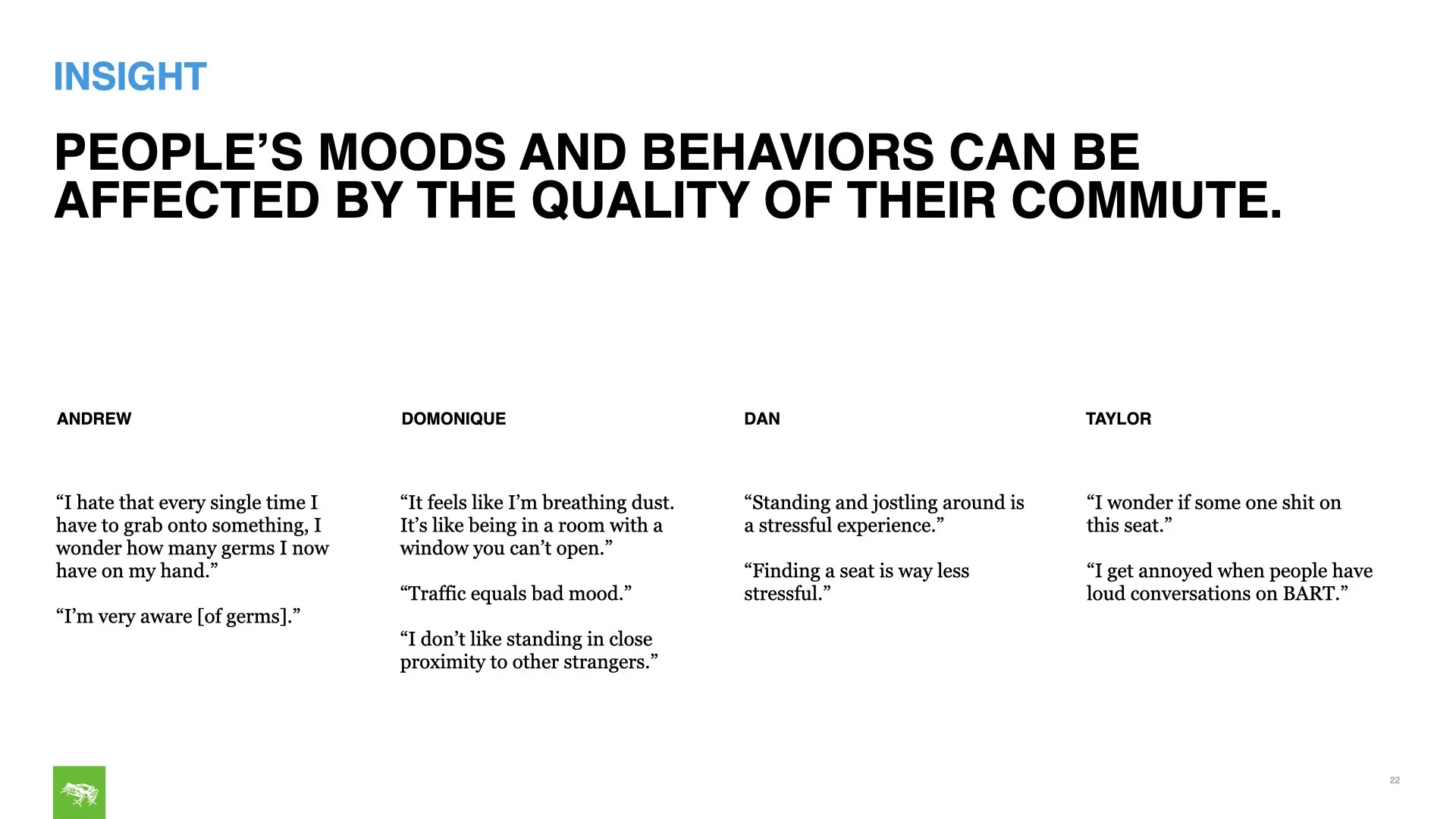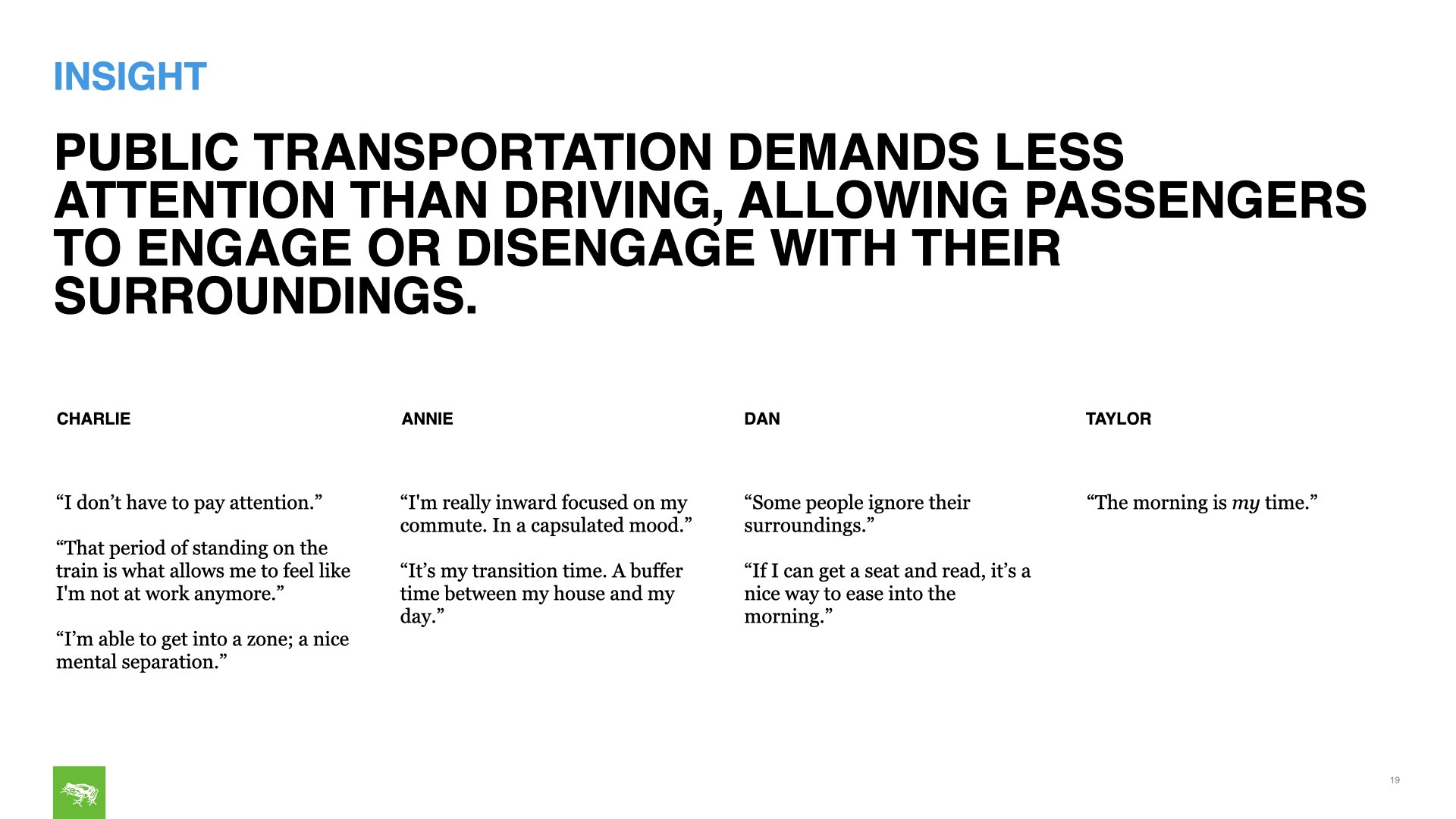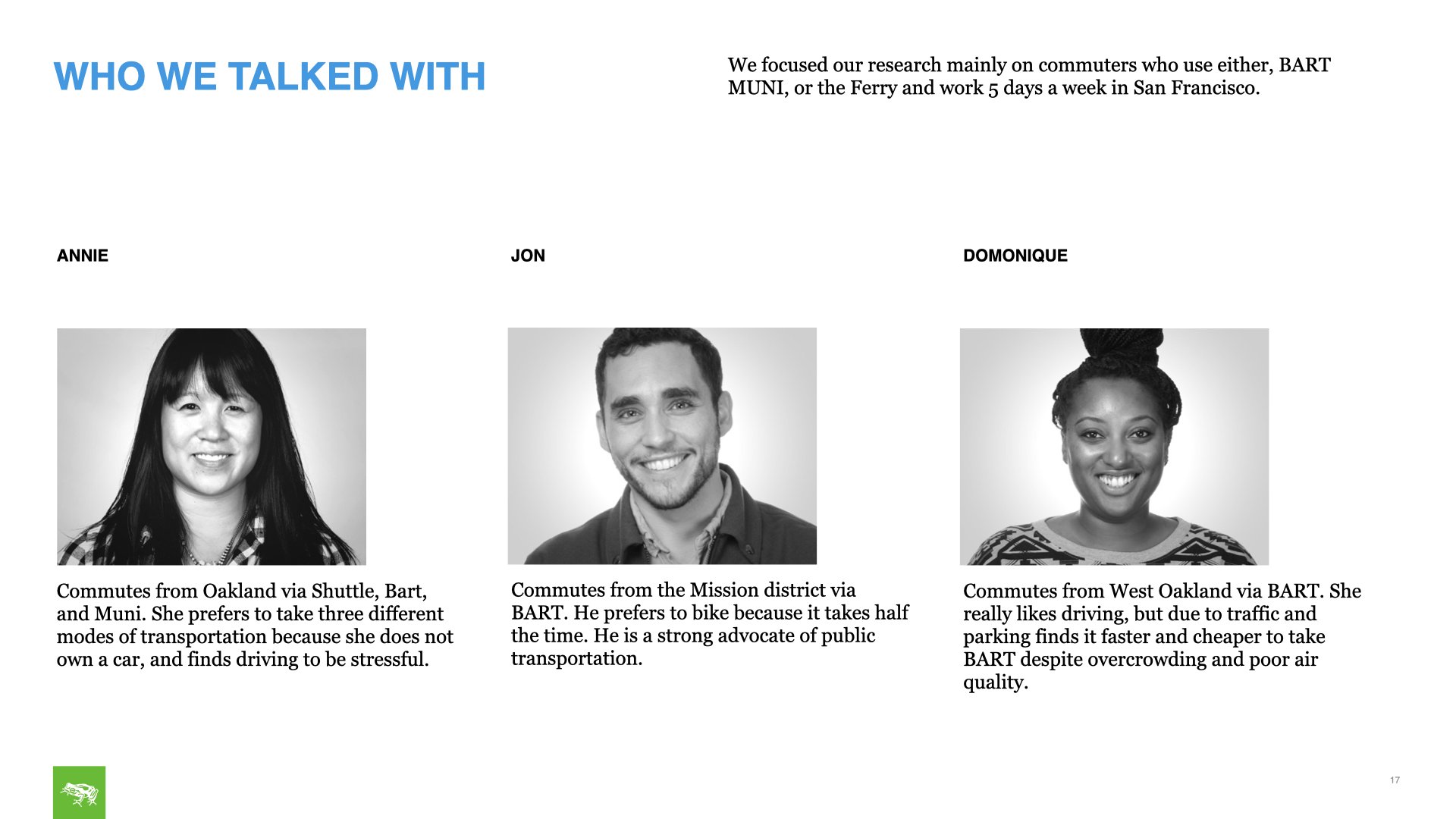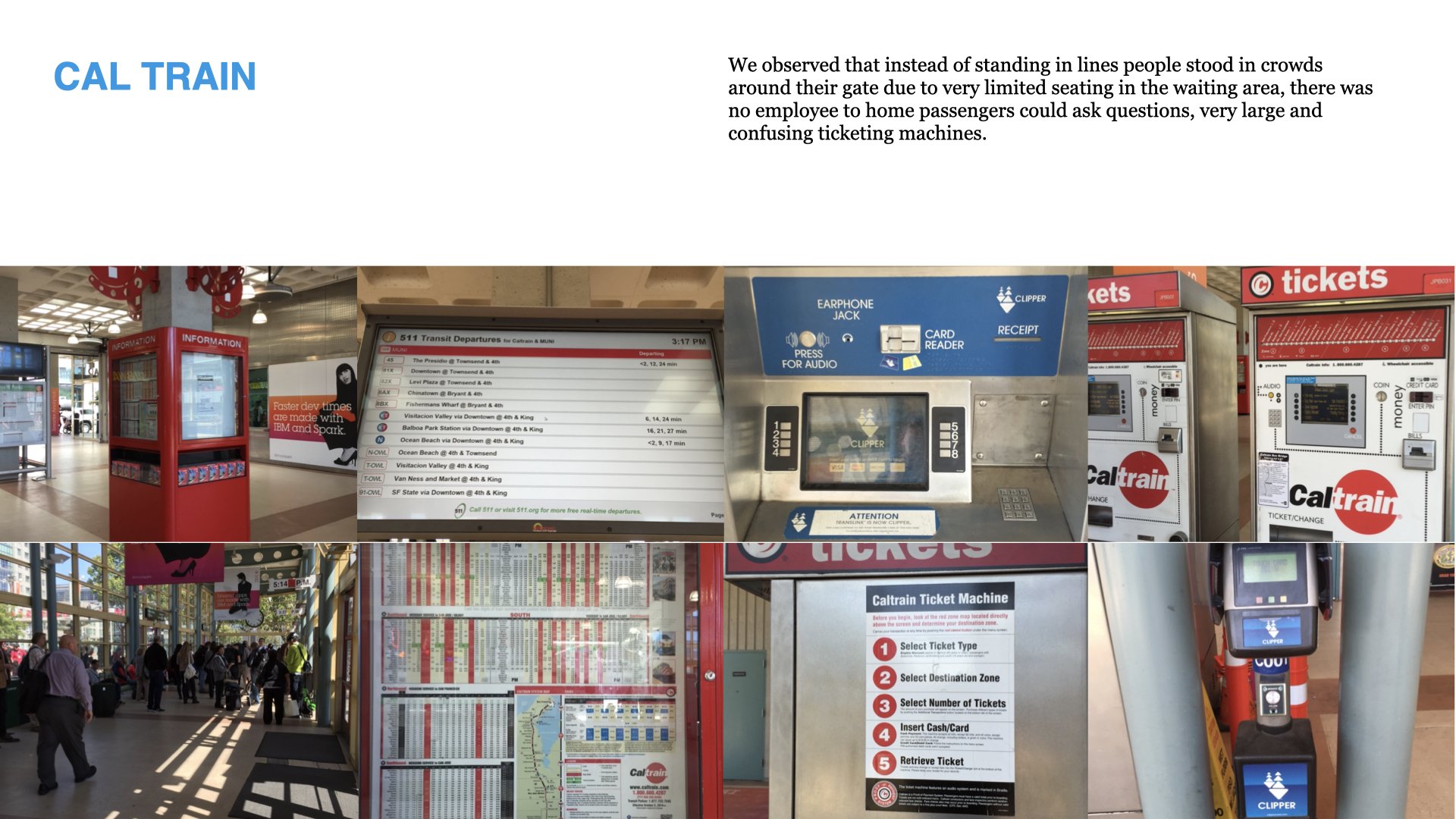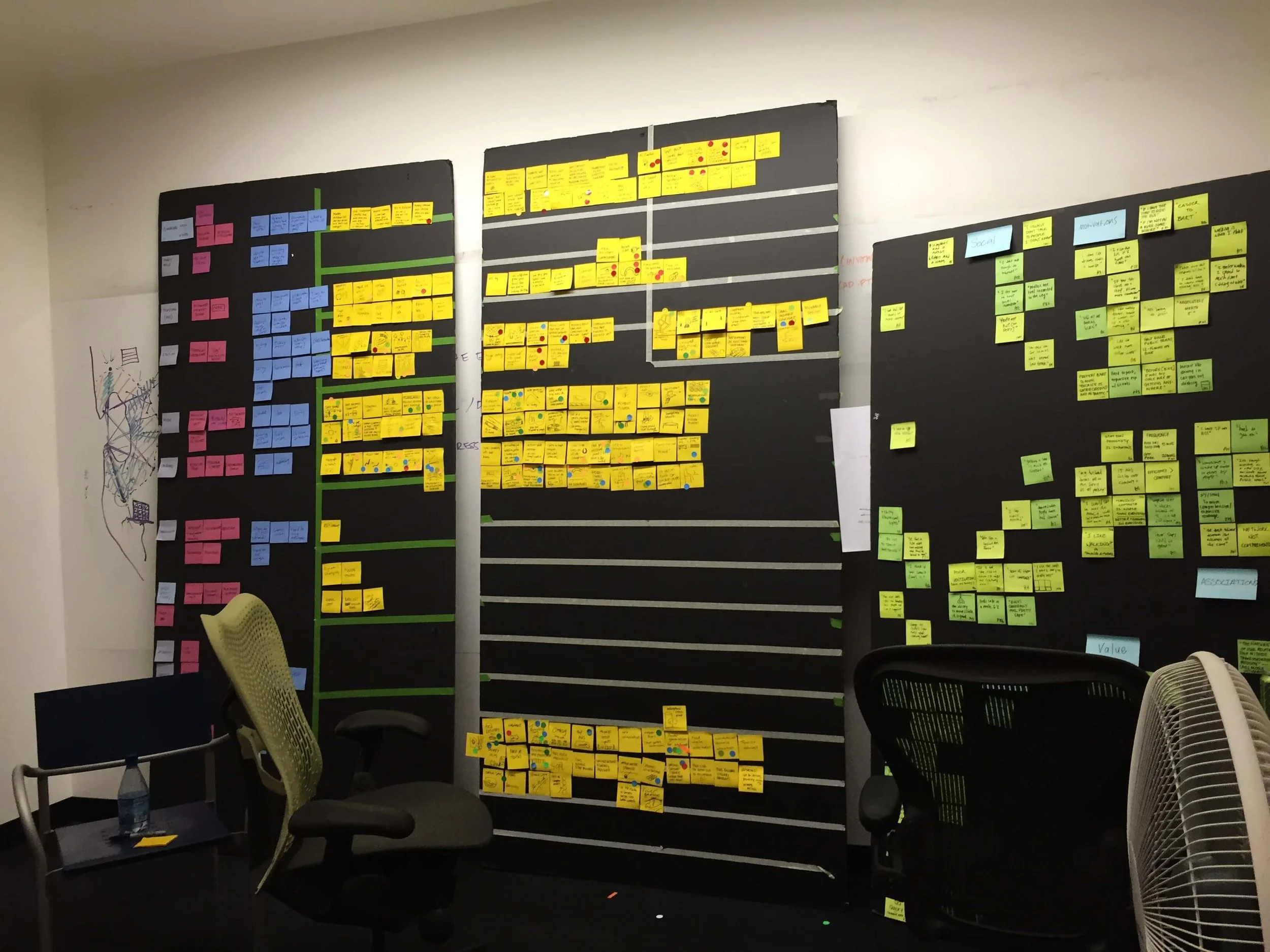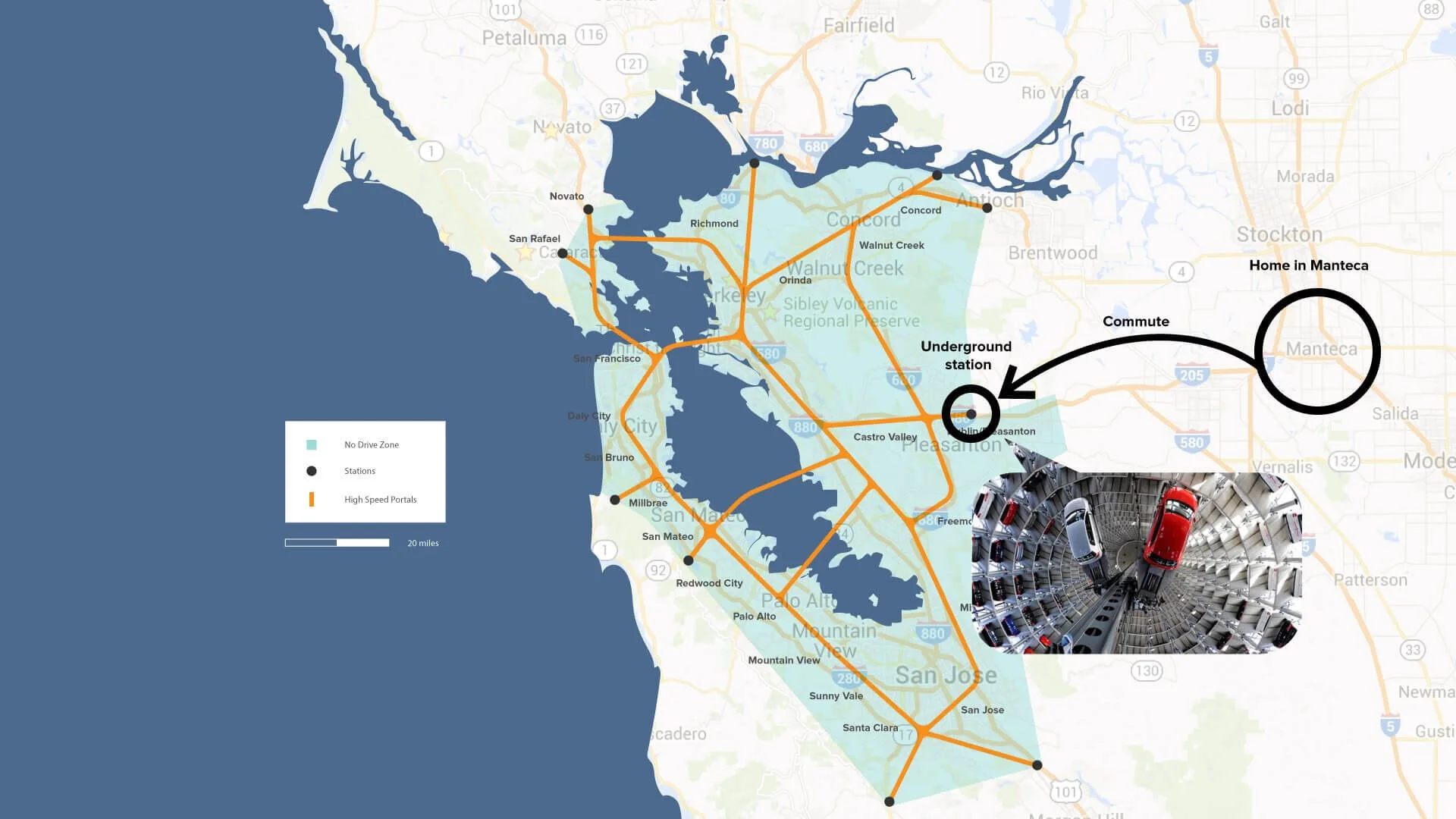Frog Design
Designing a public transportation system for the future
For an internal Frog project, we were tasked with redesigning any part of the transportation system or the system as a whole. We discovered are far-reaching, systematic inefficiencies and dysfunctions in our current transportation infrastructure network. Rather than focusing on improving all the minor inefficiencies, we focused on redesigning the system as a whole.
Role: Lead Experience/Interaction Designer research in discovering the needs of a modern transportation system.
Responsible for envisioning centralized network communication
Led research initiatives and idation sessions to generate solutions
Visualized overall passenger experience journey and narrative
Helped define the overall characteristics of the vehicle functions
Team: Drew Walcott, Cat Lam, Viral Shah, Ingrid Hong, Radhika Agarwal
Deliverables: Research readout, journey map, product vision deck, story board, product mockups
Year: 2015
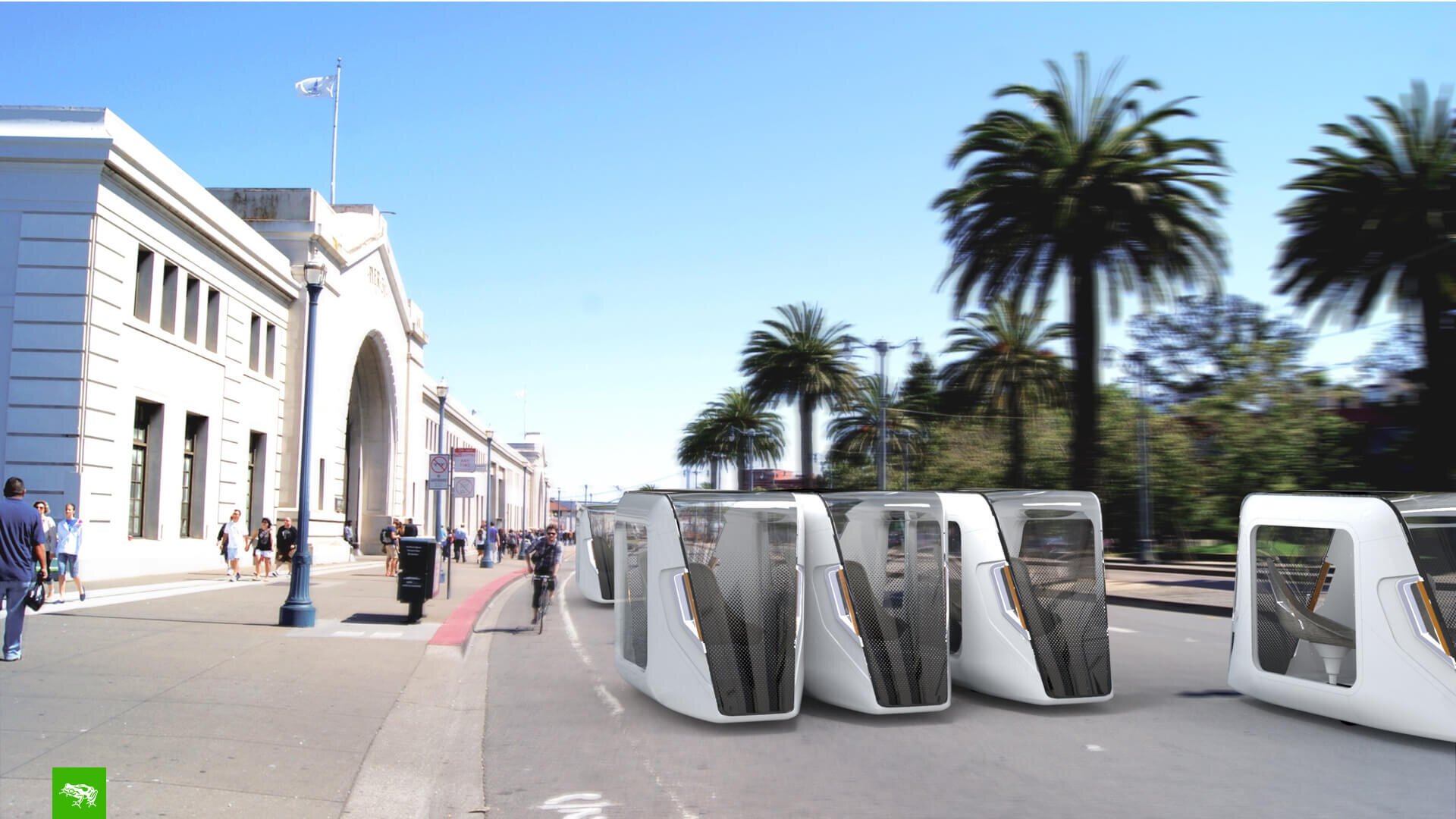
Challenge
Redesign the Bay Area transporation experience for a future 20 years from now (2015).
Secondary Research
Led the research of transporation and technological trends that could be applied to a new type of transit system.
Primary Research
Conducted 6 interviews targeting users of public or shared transportation in the Bay Area, on what they liked and disliked about current transport options.
I used this data to understand the different users, find insights into the pitfalls of the current user experience, and develop customer archetypes.
Formed insights about the motivations and behaviors of transit riders
We mapped out the different stages of the journey and with each stage, we developed concepts that we believed would improve the journey
We then voted on which ideas were most impactful to the user experience we were aiming for and devised a new system
Conducted several on-site immersions and contxtual interviews at different modes of transit to understand the current pain points
I then converted our ideas into a new journeymap that outlines the new experience
Design Solution
A public system of private transport pods
We envisioned a new public transportation system consisting of shared, self-driving vehicle pods that link together and communicate within a centralized system, improving safety and efficiency.
Centralized Navigation and Communication
Economical, Modular, and Compact
Shared by the Public
Customer Journey Map
User Scenario Storyboard
I collaborated with our team to create a storyboard that would show an example of an average morning commute in the Bay Area using this new form of public transportation.
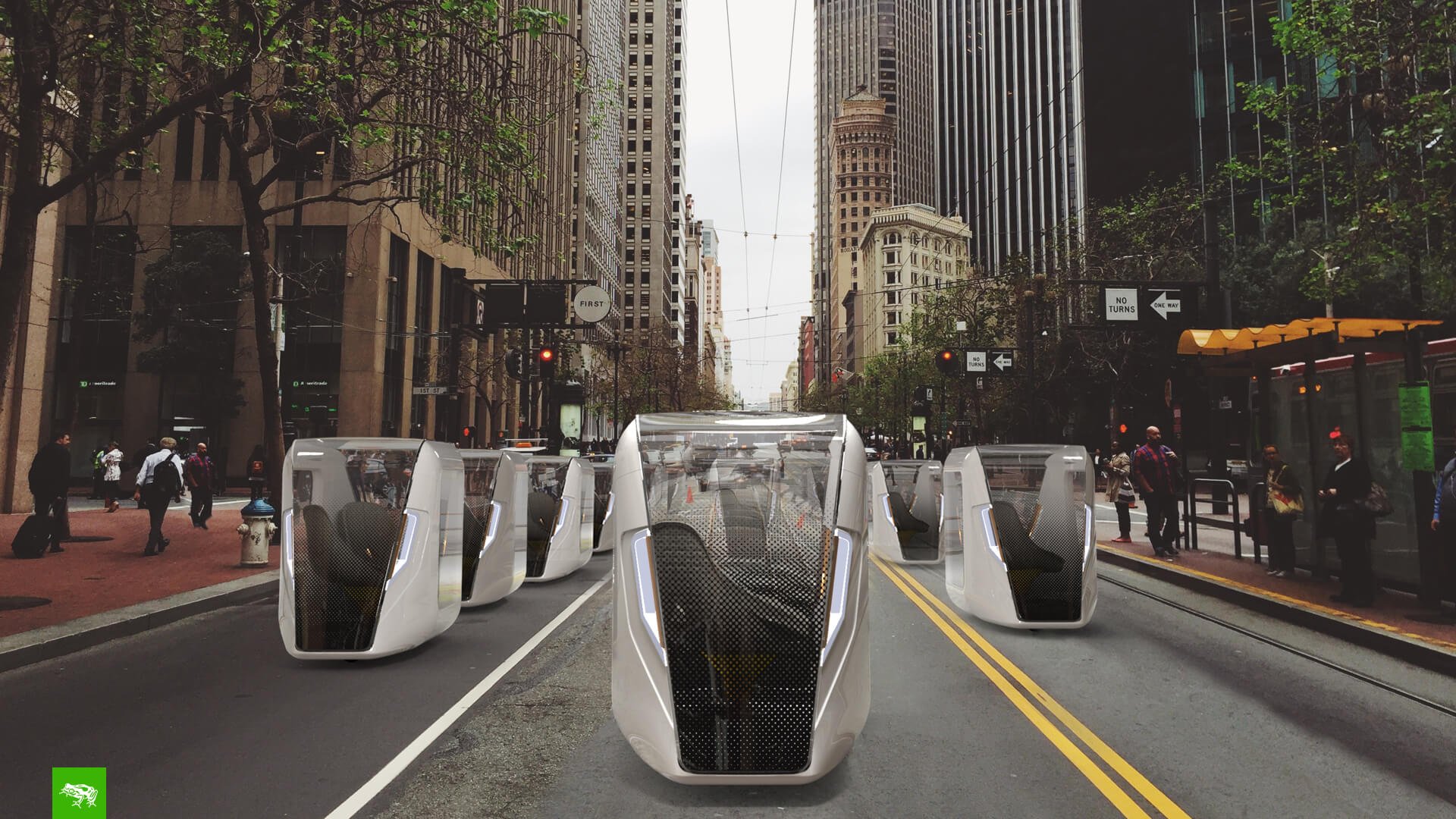
Design and technology details
On Board
The on-board experience improves upon privacy, safety, efficiency, communication and sanitation.
Visual Identification
The virtual assistant displays a code or name so passengers can identify their vehicle.
Privacy Mode
Light control glass can switch from translucent to opaque in seconds using electricity. See an example of this technology here.
LED Illumination
Cars can be illuminated brightly at night to provide the psychological feeling of safety. It can also aid in communicating which vehicle belongs to the passenger, or what purpose the vehicle is being used for.
Modularity and pod linking
We designed the vehicle to accommodate both small and large parties. Modular pods can be connected in a variety of ways to create a larger space. Vehicles utilize multi-directional synchronized movement, as well as a physical attaching mechanism, to stay in safe proximity while moving.
Multi-lateral Movement and Formation Travel
In order to improve safety, reduce traffic and improve efficiency, vehicles use centralized communication and multi-lateral movement.
Spherical Tire Technology
Spherical tires offer many benefits such as multilateral movement, reduced tire ware, and more control over parking or navigating tight spaces. See example of this here.
Formation Travel
The vehicle’s communication network and multi-directional movement allows them to move in a close proximity formation, minimizing the space needed between vehicles. The result is a reduction in traffic congestion.
Interiors designed for human use
When designing the vehicle we considered sanitation, personal space and storage. Our vehicle uses hydrophobic anti-microbial plastics to prevent stains, tears and bacterial growth on the seats and interior. The vehicle itself is designed to be adaptable to different types of riders and uses. The two seats can collapse to make room for luggage, cargo or more people.
A.I. Virtual Assistant with Transparent Touch Screen Display
Communication is important when it comes to transportation because it involves safety, time and wellbeing. The A.I. Virtual Assistant (AIVA) uses a combination of voice, written language and images to communicate with the passenger.
The assistant can display messages and images on each window, recognize most languages and can easily be operated using voice communication.
Anti-microbial Seats and UV Light Sanitation
The seats and all applicable interiors use scientifically proven anti-microbial plastic technology to provide protection against harmful bacteria, mold, fungi and viruses by up to 99.99%. Click here for more info.
Far-UVC Light sanitizes the entire cab after each use, killing 99% of airborne coronaviruses. Click here for more info.
The quick touch controls allow riders to quickly access frequently used commands:
Change their route
Cancel Ride
Stop for an emergency
Human Remote Assist
Multi-purpose Functionality
We realized the public would get the most benefit out of these vehicles if they could be utilized for as many purposes as possible. We designed the chairs to be collapsible, and seating for up to 2 people per cab. The interior accommodates all types of transportation uses including commuting, cargo, luggage, food delivery and short distance travel.
Post Board
After arrival, the vehicle offers walking instructions and recommendations for dining, shopping and attractions. It then scans for lost items and prepares for the next passenger by running an automatic sanitization procedure.
Arrival Confirmation and Travel Suggestions
Before arrival, the passenger is given a notification they are close to their destination. A second notification is given when they have arrived. After arriving, they are shown a ride summary and sent a receipt. Riders may ask for walking instructions or suggestions for nearby amenities and points of interest.
Preparing for the next rider
Once the passenger exits, the on-board cameras scan for any items left behind and notifies the passenger if necessary. Once this scan is complete, a UV light sanitation procedure takes place, killing all viruses, germs and bacteria.
Autonomous Only Zone and High Speed Portals
Adopting autonomous vehicles will most likely first take place in high density urban areas. Rural areas will be slower in adopting autonomous vehicles. Because of this, we created the “green zone”, a dense urban district in which only autonomous-capable vehicles are allowed.
The green zone was created to include only high density areas in the bay. The high speed portal system was mapped out to follow or replace existing infrastructure routes, e.g. highways, BART.
Existing Highway Integration
Population Density
Existing Infrastructure
Commuters journey from outside the Green Zone
A person commuting into the green zone from outside, will park their car in automatic underground garages. In order to minimize the visual and environmental impact of these parking hubs, we imagined underground parking connected to underground and above ground freeways.
At these parking hubs, passengers could park their car and then enter a publicly available transportation vehicle. The system would know when passengers are returning to the hub and have their personal vehicle waiting for them.
The high speed portal systems allow pods to link together while traveling at high rates of speed, making more efficient use of roadways
Problems with current self-driving systems
Companies are creating autonomous transportation systems that navigate using cameras and Li-Dar to derive information from their immediate surroundings. The inefficiency and danger of this type of system is that each vehicle acts independently and is unaware of other vehicle’s intentions or decisions. If autonomous vehicles could communicate their intentions and other information to other vehicles, there would be fewer accidents.
The future autonomous vehicle system is interconnected on a wireless network. Through sub-stations, it connects to a centralized computing hub. This hub operates as a master navigation system that can communicate with every car on the network and aid in the control of each vehicle's position and overall traffic flow.
The future of self driving:
A centralized system
Centralized + Subsystem Diagram
Each vehicle connected to the network would have a “shared consciousness” with each other as well as the centralized network. This provides each vehicle with information on where other vehicles are, what they see, and their future actions.
The centralized communication hub increases safety by constantly communicating with each vehicle. It can be alerted when there is an anomalous environmental threat to one vehicle. It then alerts the entire system so countermeasures can be taken by all oncoming vehicles in the area.
To reduce traffic, the communication hub also use A.I. algorithms to create hyper efficient traffic management systems that manage or influence each vehicle's route in order to disperse the traffic and avoid congested areas. It could also be used to help predict traffic and allow people to plan travel easier.
The centralized hub’s hyper management of the entire system and each individual vehicle connected to the network enables the network to regulate speed and spacing between each vehicle, allowing them to travel within very close distances of one another.






